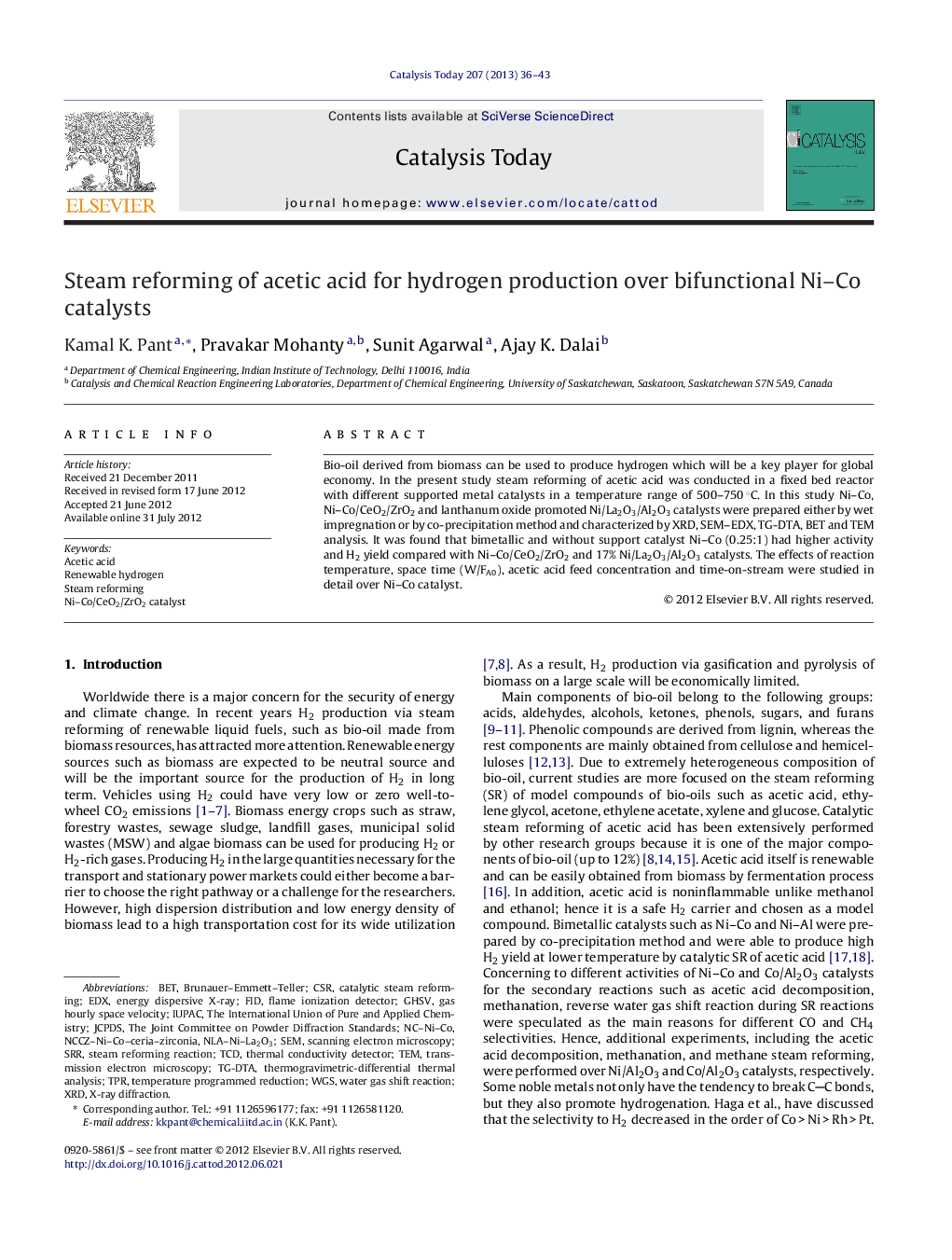| Article ID | Journal | Published Year | Pages | File Type |
|---|---|---|---|---|
| 54858 | Catalysis Today | 2013 | 8 Pages |
Bio-oil derived from biomass can be used to produce hydrogen which will be a key player for global economy. In the present study steam reforming of acetic acid was conducted in a fixed bed reactor with different supported metal catalysts in a temperature range of 500–750 °C. In this study Ni–Co, Ni–Co/CeO2/ZrO2 and lanthanum oxide promoted Ni/La2O3/Al2O3 catalysts were prepared either by wet impregnation or by co-precipitation method and characterized by XRD, SEM–EDX, TG-DTA, BET and TEM analysis. It was found that bimetallic and without support catalyst Ni–Co (0.25:1) had higher activity and H2 yield compared with Ni–Co/CeO2/ZrO2 and 17% Ni/La2O3/Al2O3 catalysts. The effects of reaction temperature, space time (W/FA0), acetic acid feed concentration and time-on-stream were studied in detail over Ni–Co catalyst.
Graphical abstractNi–Co, Ni–Co/CeO2/ZrO2 and lanthanium oxide promoted Ni/La2O3/Al2O3 catalysts were tested for catalytic steam reforming (CSR) process. It was found that Ni–Co (0.25:1) bimetallic and without support catalyst had higher activity and yield compared to Ni–Co/CeO2/ZrO2 and 17% Ni/La2O3/Al2O3 catalysts. The effects of reaction temperature, space time (W/FA0), acetic acid feed concentration and time-on-stream were studied in detail over Ni–Co catalyst.Figure optionsDownload full-size imageDownload high-quality image (96 K)Download as PowerPoint slideHighlights► Ni–Co, Ni–Co/CeO2/ZrO2 and lanthanium oxide promoted Ni/La2O3/Al2O3 catalysts were tested for steam reforming. ► Ni–Co (0.25:1) bimetallic and without support catalyst had higher activity and yield compared to Ni–Co/CeO2/ZrO2 and 17% Ni/La2O3/Al2O3 catalysts. ► Detailed catalyst characterization was done by BET, TPR, TGA, XRD, SEM–EDX and TEM techniques.
